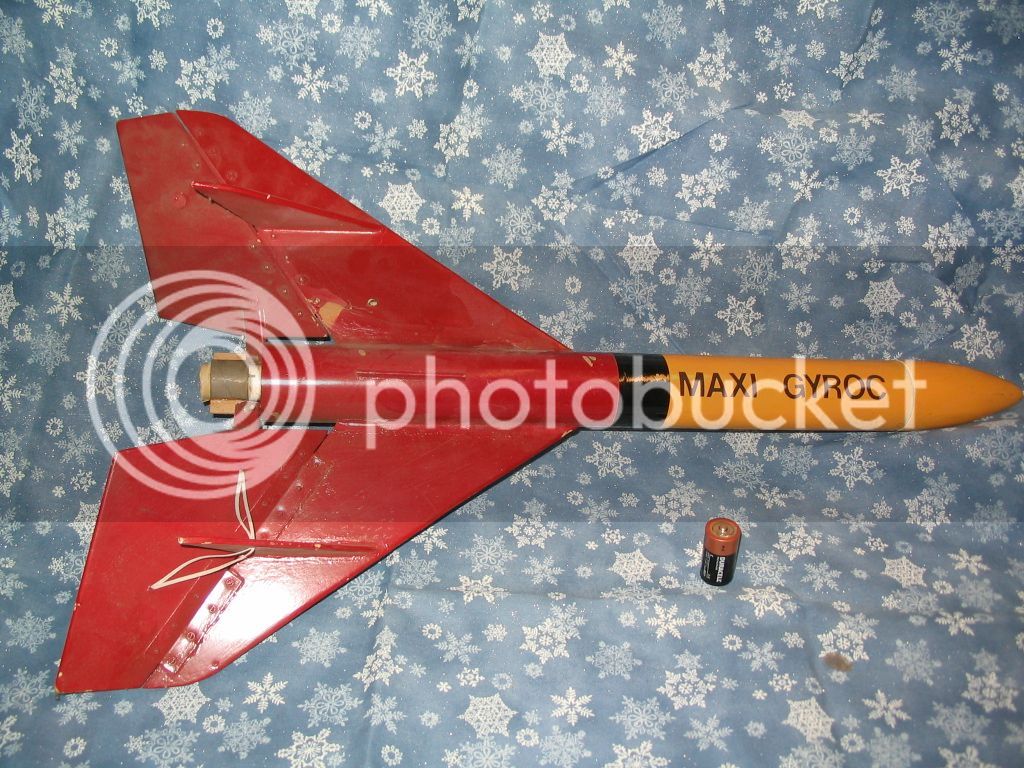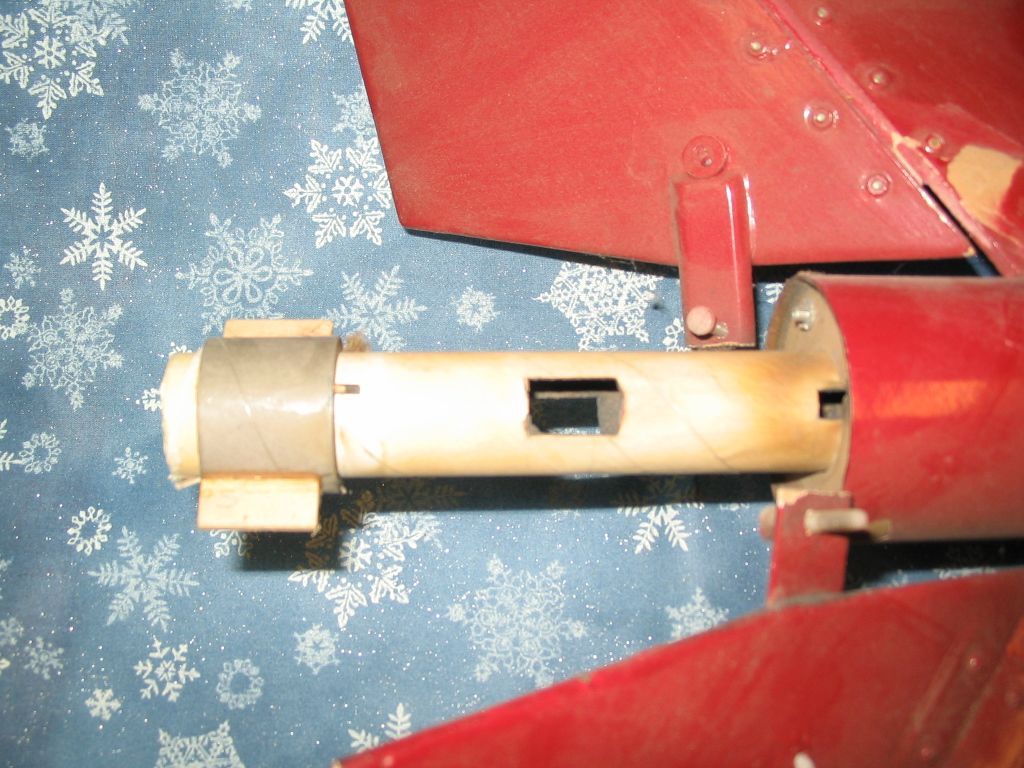The problem is that the original gyroc had balsa fins, but when you increase the size of the fins 3-4 times and put more stress on them with high power motors, you have to switch to plywood for better structural integrity. Plywood is 3.7 times heavier per cubic inch than balsa. So when you upsize a Gyroc fin 4x and make it plywood, the fin weight increases nearly 15 times. That moves the CG way behind the CP and makes the rocket unstable. If you switch to fiberglass it is even worse even if you go half the thickness.
In order to keep the CG in the same scaled location, you need to add weight equvalent to approx. 73% the weight of the upsized fins into the nose cone. That added nose weight makes the thing drop like a rock. I recently saw a fin design where the perimeter of the fins were plywood, but the area inside the perimeter was a lighter weight material (i.e. foam core) and that might provide a solution to the problem, but even there, you might not be able to make it high power.







